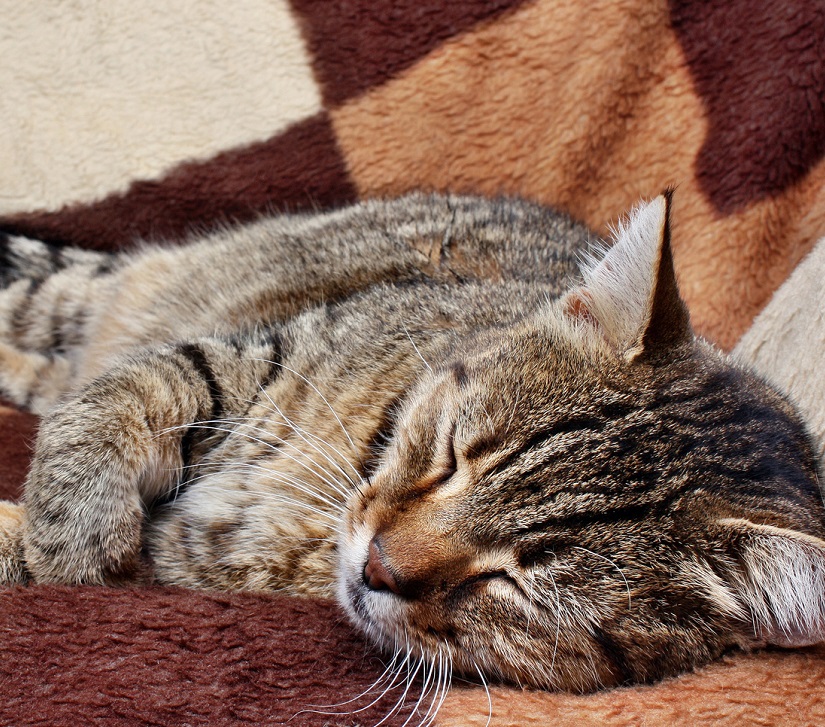Feline Chronic Kidney Disease (CKD)
A cat’s urinary system consists of the two kidneys, bladder, the ureters (small tubes) that connect them, and the urethra that empties the urine from the bladder. There are two serious conditions that commonly affect the urinary system of cats. In a case of chronic kidney disease the two kidneys – despite the in-built spare working capacity they have – are so affected by disease that they cannot carry out their normal functions. This differs to Feline Lower Urinary Tract Disease (known as FLUTD) which involves a cat’s bladder and urethra.
Kidneys have several vital functions, including removal of the waste products, and a role in maintaining the body’s water levels and the chemical substances dissolved in that water.
The filter-like working parts of a kidney are called nephrons, each of which consists of a blood filter attached to a complex piece of pipe work called a tubule.
Both kidneys contain hundreds of thousands of nephrons. When a significant number of them become damaged or are destroyed by disease, the remaining nephrons cannot cope, the cat will start to suffer from renal failure
Only 30% of kidney capacity is needed for normal functioning. Therefore, no symptoms will be seen until approximately 70% of renal function is lost. It is important to begin treatment as soon as the first symptoms appear. As CKD is primarily a degenerative disease, it is most common in old cats. It has been estimated that around 16 per cent of cats over 15 years of age have significant renal dysfunction.
Common Symptoms
May include any of the following:
| |
Renal failure may be termed acute or chronic. In acute renal failure, a significant number of nephrons all stop working suddenly at the same time, as may occur with poisoning or sudden urinary blockages. Chronic kidney disease (CKD) occurs more gradually due to progressive underlying diseases, and is the most common type of renal disease to affect cats.
Diagnosis and treatment
Renal disease can be a life-threatening condition. The long-term outlook for most cats with CRD is poor, but many can enjoy a good quality of life if treatment is initiated promptly, and is diligently carried out by yourself with assistance from your vet. Staging CKD can give us a better indication on outlook and treatment.
We generally diagnose CKD by carrying out blood and urine tests, however we may also recommend blood pressure measurement, thyroid testing and further urine tests to look for infection and protein loss. This also allows us to stage the CKD. Imaging may also be required such as x-rays and/or ultrasounds.
Warning: If your cat has been diagnosed with CKD but suddenly shows new symptoms contact us immediately. Other conditions, which may seem trivial in a healthy cat could affect a CKD cat more seriously, and may require prompt treatment. In most cases of CKD the cause is not identified, so your vet may only be able to begin treatment aimed at alleviating the symptoms:
- Intensive care/hospitalisation – If your cat is very ill, we will suggest admission to hospital to allow administration of intravenous fluids. This is required to correct dehydration and helps flush toxins out of the bloodstream. We will also assess the need for additional investigations or medications for your cat.
- Dietary management - Specially designed Prescription Renal diets are highly recommended and studies prove that they can significantly increase life expectancy after diagnosis. Available diets include wet food (canned and pouches) and biscuits. Introduce gradually (over 1-3 weeks) to increase acceptance.
- Provide adequate fluid intake - At home, you must ensure your cat has permanent access to fresh water. It can be helpful to add water into the food to increase water intake.
- Specific medications may be required for urinary tract infections, urine protein loss (Fortekor) or high blood pressure. Some cats will develop electrolyte and mineral imbalances thus regular monitoring is crucial.
- Appetite stimulants and gastro-protectants - some cats benefit from intermittent or regular use of medication to stimulate the appetite and treat nausea
Ongoing monitoring
Your vet can recommend the best course of action for ongoing monitoring for your cat – this will include:
- regular check ups
- repeat blood and urine testing so check to development of electrolyte and mineral imbalances in addition to monitoring for urinary tract infections
- blood pressure measurements to screen or manage hypertension
- body weight checks
- repeat imaging such as ultrasounds
More information: www.iris-kidney.com
Our Midland & Drovers Vet Hospitals are both accredited ISFM Cat Friendly Clinics.
The Cat Friendly Clinic programme is an internationally recognised assessment accreditation scheme which is open to any veterinary practice that cares for feline patients. There are certain requirements regarding design, equipment and facilities within the clinic, which must be met to achieve the standard. The clinic must also demonstrate that a high quality of care is provided to cats and that all staff understand cats and their needs in a clinic.
The benefit to the clinic is that not only will the scheme help to improve the clinical care of feline patients but may also increase the number of clients who are actively seeking a cat friendly clinic for their pet.




